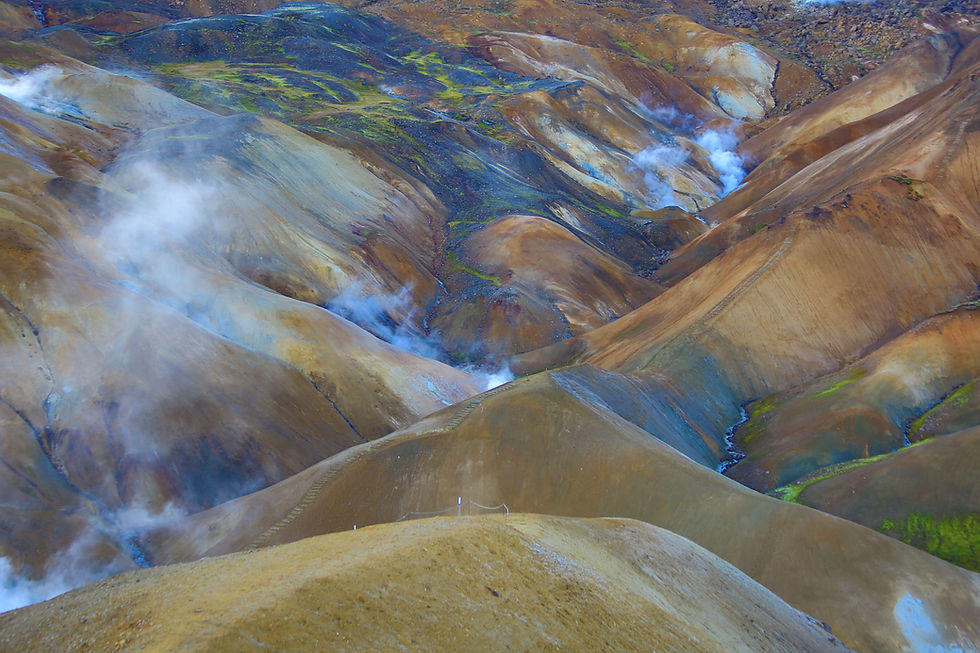Mānoa, Honolulu, Oahu
- Aug 29, 2020
- 4 min read
Updated: Jan 3, 2023
Mānoa valley was once a rich and fertile valley where ancient Hawaiians farmed for centuries before the arrival of western people. As early as 1400 A.D, evidence of taro, bananas and breadfruits were planted in this water-rich valley. There are many springs hidden deep inside the valley walls, where cool water from the mountains would gush forward and feed the many waterfalls hidden along the back walls. Many of these springs and falls were tapped by building an extensive network of water ditches, flumes and tunnels. If you venture deep inside this valley, you will still find many evidences of water diversion.

Mānoa, or the lush valley of Mānoa, is surrounded by the valley walls of the Ko'olau range forming one of the largest amphitheater valleys on Oahu. Due to its tropical temperature and abundance of water from the Ko'olau mountains, Mānoa was used to cultivate many coffee and sugarcane plantations in the early 19th century. With that in mind, it also attracted many botanists who were hired to work alongside these big planters in collaboration with the Hawaiian Sugar Planters' Association (HSPA). One such famous botanists was Dr. Harold L. Lyon, who was made the first Director of Mānoa Arboretum (now renamed to Lyon Arboretum). Under the influence of Dr. Lyon, HSPA donated the arboretum to the University of Hawaii at Mānoa as a gift for the public in perpetuity. Over the thousands of years being isolated from the rest of the world, the flora and fauna evolved and developed into unique species that can only be found here today. The Lyon Arboretum houses many of such species.

Nestled in the lush back west end of the valley, we can see the great green lawn of Lyon Arboretum and its surrounding buildings. To its immediate left stands tall the extensive collection of pritchardia spp.

Although introduced, the southeast asian Albezia trees stand tall at Inspiration Point within Lyon's gardens. Here parrots make their home and are very chatty. Below, Aihualama Falls is tucked deep into the far back of the arboretum. It's flow is normally not strong due to years of water diversion; but pick a day after heavy rains and it shows its beauty again.

Standing at the mouth of the valley looking mauka (mountain), the large amphitheater of the valley gives the impression of one standing inside a bowl; much like a water bowl. It is along this back end of the valley that there are many waterfalls collecting water like a bowl, flowing into the main Mānoa Stream that ultimately flows into the Ala Wai Canal in Waikiki. Due to its verdant and lush valley, many tourists and locals flock to it's many waterfalls. One of six such falls is aptly named Mānoa Falls.
The lands at the back of the valley are mostly inaccessible except for limited hiking as it is mostly owned by the Honolulu Board of Water Supply. Besides Mānoa Falls, there is also to the east another fall called Waiakeakua, or water of the gods. This area is sacred or kapu, as there are many Hawaiian legends and myths of the gods stemming from this area. A spring called Wa'aloa feeds Waiakeakua. It is believed to have been created by the Hawaiian God Kane as he and his brother Kaneloa travelled across Mānoa. Legend also speaks of a secret pool where the Queen and her entourage would go to take a cool dip when the weather heated up. Its clear bluish waters are always inviting.

Along the western slopes of the valley (today along Mānoa Road) ali'i (royalties) built their summer homes, where they had a commanding view over the entire valley below inhabited by the kanaka or regular people who worked and live amongst the farmland. In this area, there still exist a surviving heiau, called Kūka‘ō‘ō heiau which is located behind the Manoa Heritage Center. The center resides on approximately 3.5 acres of heritage land and is situated along with a prominent family's house called Kūali‘i. Visitors to the center will gain a keen understanding of what life was like in the valley over time.
The are many hauntings around the Mānoa valley. One such particular spot with a high frequency of such paranormal activity is the Mānoa Chinese Cemetery. The Chinese cemetery was established in 1835 by a group of Chinese immigrants who pooled money together to purchase a piece of land on a hill to bury their deceased. Today there are several haunted tours being conducted around the premise, especially during the month of October.

The largest institution in this valley is the flagship of the University of Hawai'i. It is the largest research institution in the Pacific and the campus takes up almost half of the valley. The Mānoa campus is named the greenest campus by TREE CAMPUS USA for the last 10 consecutive years. Due to the high frequency of rainbows forming in within this valley, the University named it's Division 1 athletics team the Rainbow Warriors.



Today Manoa is one of the most sought after neighborhoods in Honolulu. Its population has grown from a mere 300 to now over 50,000. Unfortunately, there are only three main roads into the valley and therefore, it can get pretty congested with traffic. The back of the valley is still verdant and the many rainbows still grace its slopes.











Comments